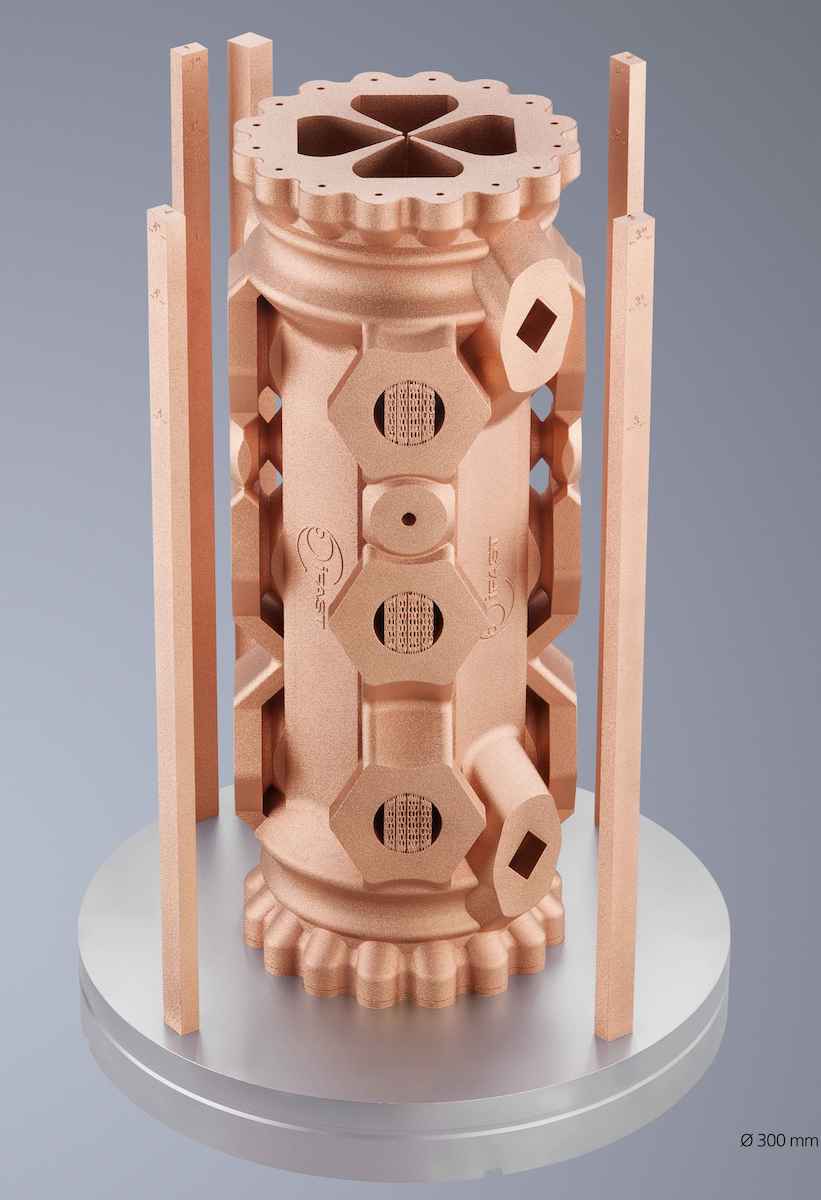Besides high-energy physics, particle accelerators play a crucial role in cancer therapy and material analysis, and hold the potential for ambitious environment and energy applications. However, their size and manufacturing cost are often obstacles to their use outside of physics laboratories. Among other innovations, additive manufacturing, also known as “3D-printing”, could be part of the solution to make particle accelerators more readily available to society.
As part of the EU-funded I.FAST project, which aims to develop and enhance leadership in particle accelerators in Europe, the German high-tech company TRUMPF has for the first time additively manufactured a core component of future particle accelerators – a Radio Frequency Quadrupole (RFQ) module. RFQs are among the most complex components of linear particle accelerators, and are critical to providing the initial energy boost to the proton or ion beam coming out of the ion source. The 40-cm long RFQ module with modulated electrodes has been shown at the leading 3D printing trade show Formnext in Frankfurt this November.
“Additive manufacturing can help reduce the size and cost of accelerators, shorten their construction time and enhance their performance. Used at a wider scale, additive manufacturing could make accelerators more affordable for use outside of large scientific laboratories, such as in hospitals for isotope production and cancer treatment or in laboratories for material analysis,” explains CERN’s Maurizio Vretenar, I.FAST project coordinator. “Over 30 000 accelerators are currently in use worldwide, the vast majority of which for healthcare and industry”.

The I.FAST team of experts from CERN, Politecnico di Milano, CNRS-IN2P3, Fraunhofer IWS and RTU designed the RFQ specifically for a TRUMPF 3D-printer that relies on a highly energetic green laser beam. The successful “printing” of such a critical component in one piece of metal only is a technological prowess in itself. "This is proof that large copper components can be manufactured additively with sufficient precision thanks to our green laser beam, which can print even the finest copper structures. High-precision parts like the RFQ can be manufactured faster, cheaper and more energy-efficiently," says Michael Thielmann, additive manufacturing expert at TRUMPF.
The 3D-printed RFQ replicates, with some improvements allowed by additive manufacturing, the design of the CERN-patented high-frequency (750 MHz) RFQ that has already found applications in proton therapy of cancer and ion beam analysis. The 3D-printed module will now go through post-processing to improve roughness and conductivity, followed by vacuum and voltage holding tests in preparation for the construction of a complete 1-m long RFQ to be tested with beam.
Additive manufacturing belongs to the portfolio of advanced technologies currently being explored by I.FAST. "I have no doubt that the accelerator community will increasingly rely on additively manufactured components when designing and building new facilities" concludes Toms Torims, researcher at Riga Technical University (RTU) and I.FAST Work Package coordinator for advanced accelerator technologies.

